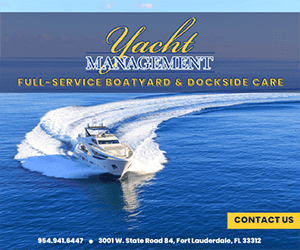By Lucy Chabot Reed Capt. Wayne Williams of the 50m expedition-style Amels M/Y Karima was named Fraser Yacht’s Management Captain of the Year at a…
A captain-owner conflict: Slow down and save
Jan 27, 2015 by Peter HermOne of the biggest stories in the boat business over the past six months has been the free fall in fuel prices. This changes the economics for many boat owners and will hopefully get more boats moving.
While less impactful for deep-pocketed yacht owners for whom the fixed cost of crew will typically far surpass the fuel bill, this change results in money saved that can then be spent on more important things like raises for the crew or that new high-speed Internet system we “need”.
Burning cheaper and less fuel benefits everyone, except maybe OPEC and my friends in Texas.
Here is a proven way to burn a lot less fuel: Go slower. Now it’s just a matter of convincing the captain to go along.
I realize that some owners like to go fast. Yet why waste the money and subject the engines to more wear when the owner is not on the boat? In my case, the cruising part is more enjoyable, not just the floating condo aspects of boat ownership.
Generally, the slower most boats go, the more fuel efficient they will be. (Yes, I know there are lots of variations on this: planning hull vs. displacement, on plane, off plane, sea conditions, etc. Bear with me.)
For example, our boat with MTU2000 series engines will go 22 knots and burn more than 200 gallons per hour (GPH), about nine gallons a mile. At 9.3 knots, they only burn about 15 GPH, At 10.5 knots (where my captain likes to cruise), they burn 25 GPH. This does not include generator use.
If fuel costs $3 a gallon, it’ll cost $4.84 to go one nautical mile at 9.3 knots instead of $7.14 to cover that same mile at 10.5 knots. Going just 13 percent faster (10.5 vs. 9.3kts.) burns 48 percent more fuel (money).
Use these numbers to figure the cost of the 1,500-mile passage from Key West to Bangor, ME (www.sea-distances.org). The savings are significant. At $3 a gallon and cruising at 9.3 knots, the fuel cost for this trip is $7,260 instead of $10,710 at 10.5 knots.
The trip took 18 hours longer, but even calculating the extra fuel burn on the generator/s at 3 gph, money is still saved by going slower.
The engine experts I’ve spoken to over the years say that lower RPM results not only in less fuel burned but also, more valuably, in longer engine life. The time between overhauls on a 1200 rpm generator is longer than on an 1800 rpm generator.
The reality is that there are no negatives to going slower, except the additional hours the crew works while under way. However, isn’t a boat in motion better than a boat at the dock? It is for me.
Over the past 30 years of owning yachts, I have had multiple captains who simply cannot bring themselves to run just a little slower. There have been a long list of seriously and earnestly communicated reasons as to why the boat cannot go slower. Here are my favorites:
No 1. It hurts the engines. The purported logic behind this myth is that by running slower, the engines do not reach operating temperatures and carbon accumulates in the cylinders. While this is true, here is what the experts say: “Running your engines at 1000 rpm is fine, but bring the engines up to 80 percent of maximum rpm for 20 minutes every 12 hours. This will burn out the carbon. Your engines will last significantly longer.”
This comes from Ryan Kamphuis, senior sales engineer of MTU America, and Jason Herbert, president and owner of Antilles Power, the Caribbean MTU distributor. Herbert is also the guy who rebuilt my boat’s engines, which went from Maine to Alaska and back — at a memorable 9 knots — without so much as a wrench turned, with the exception of fluid changes.
No. 2. The stabilizers don’t work at slow speeds. A conversation with Dave Yish, senior customer service manager at Naiad Dynamics, the largest manufacturers of stabilizer systems in the world, busted this myth.
“While stabilizing systems are designed for the typical running speed of the boat and may be less effective at slower speeds, the difference between their effectiveness at 9.3 knots vs. 10.5 knots is infinitesimal; less than 5 percent at most.”
No. 3. The boat has a funny vibration running that slow. That may be true, but it is most likely an indicator of other issues (props, bearings, mounts, etc.) and not the chosen speed. It is a good warning sign for other issues that are probably not due to speed.
Our boat will cover about 15,000 miles this year. My desired 9.3 knots will save about $35,000 over running at 10.5 knots during that time. Maybe the savings will pay for the nifty new Internet system that will help while away those extra 180 hours at sea my captain and crew will gain by going slower.
Peter Herm is the pen name for a real yacht owner who is an entrepreneur based on the East Coast of the U.S. It comes from Pieter Harmensz, original owner of the oldest known stock certificate in 1606, issued for a Dutch company with the largest shipping fleet in the world. Comments on this column are welcome at [email protected].
Topics:



